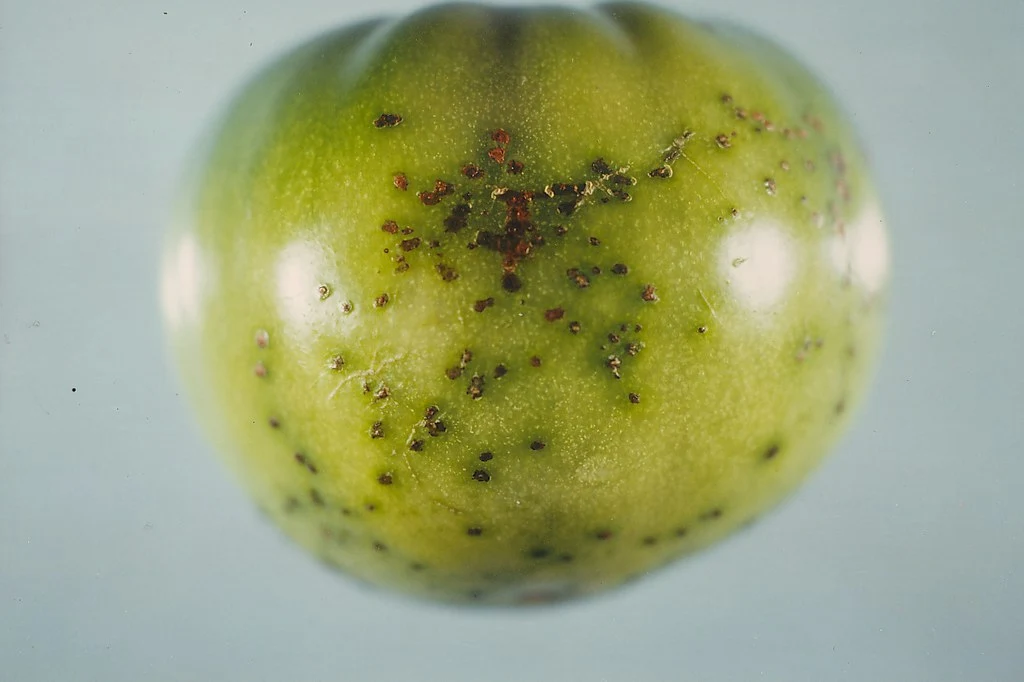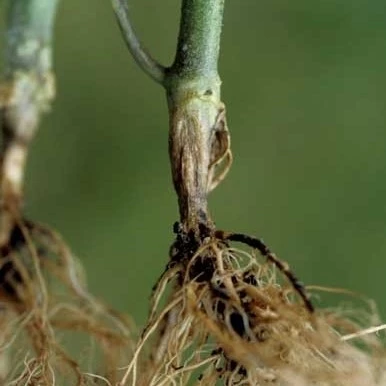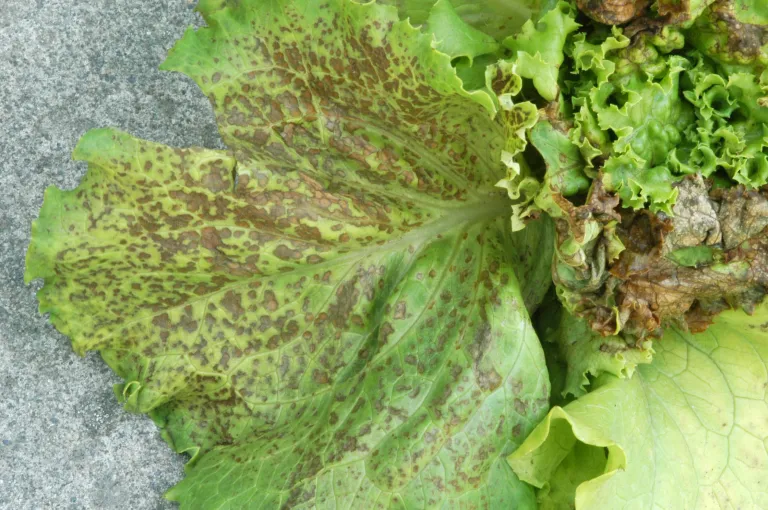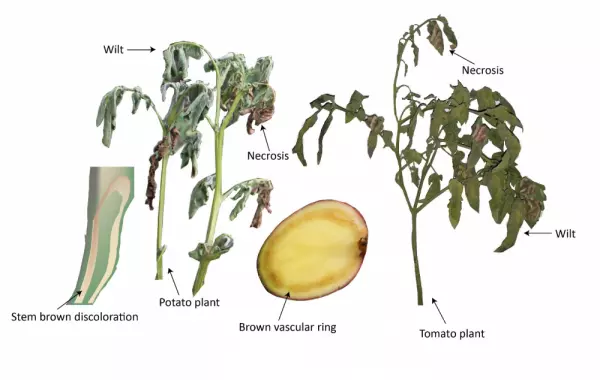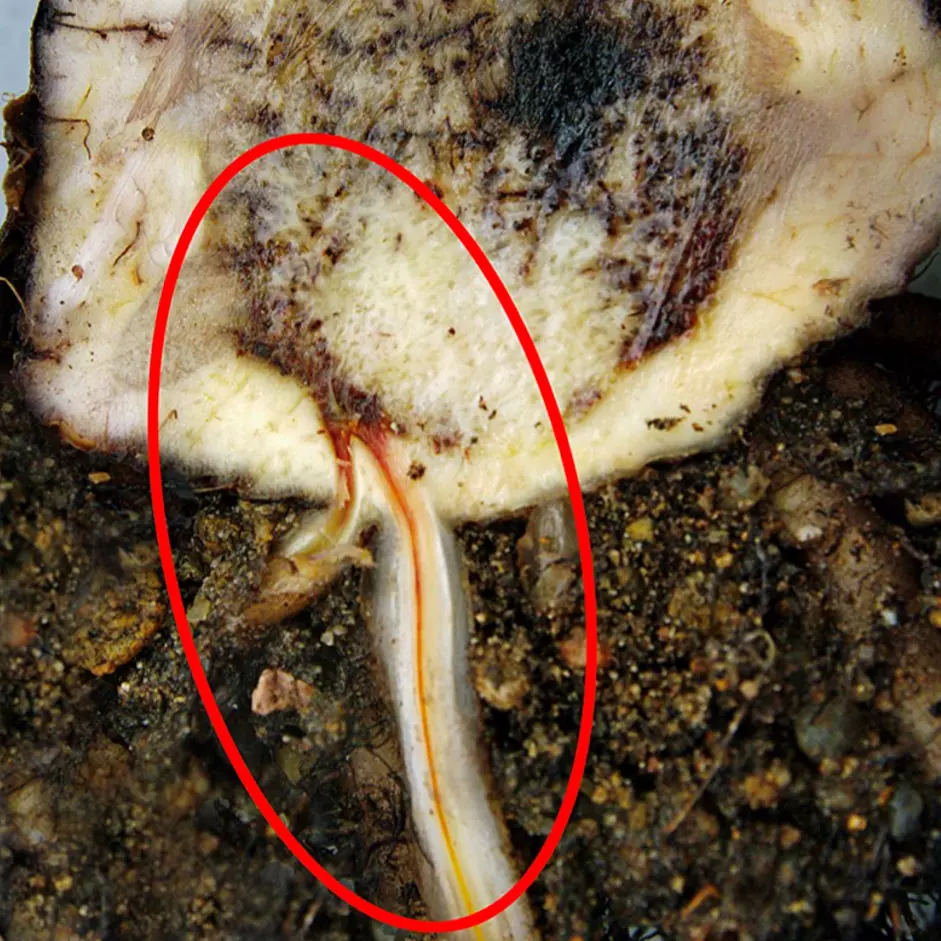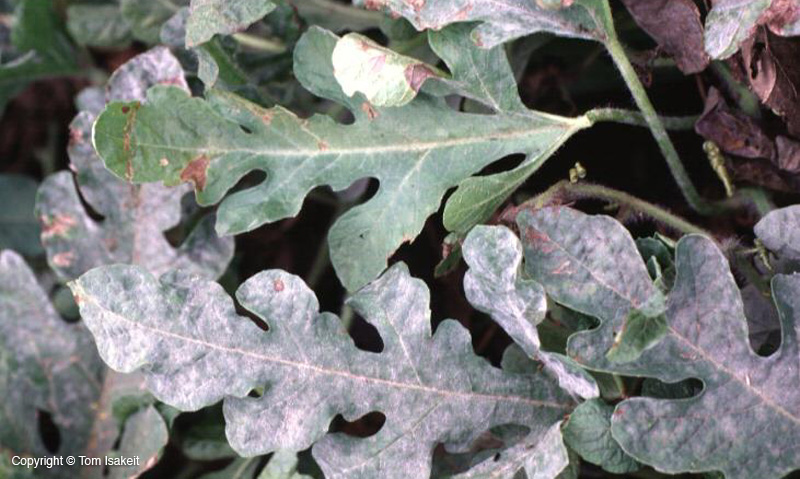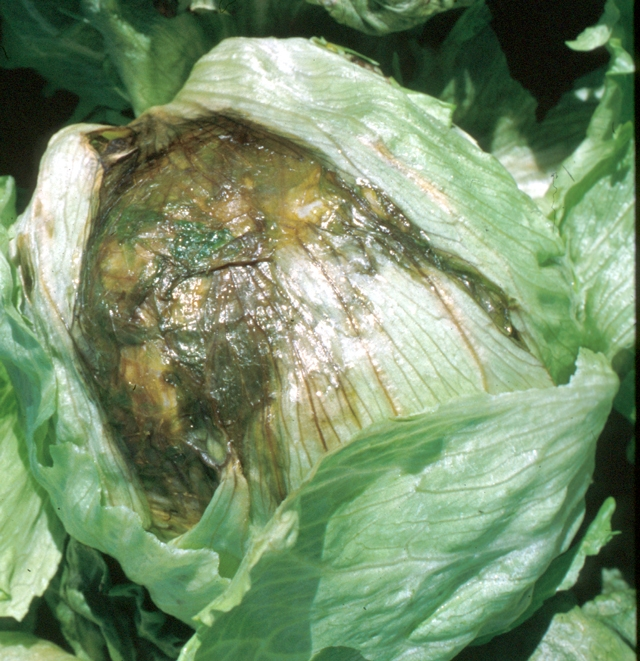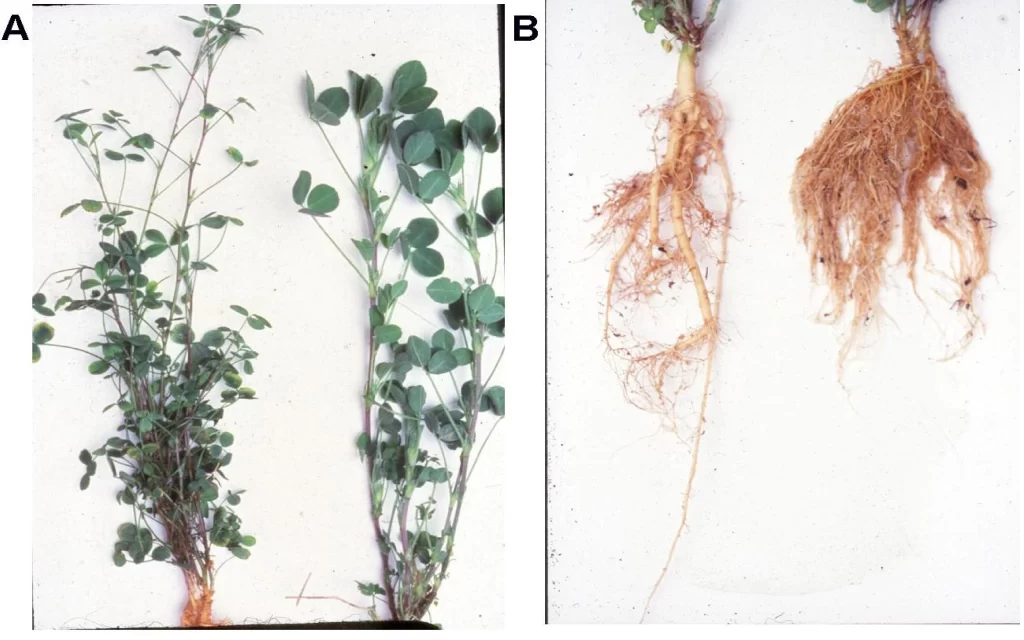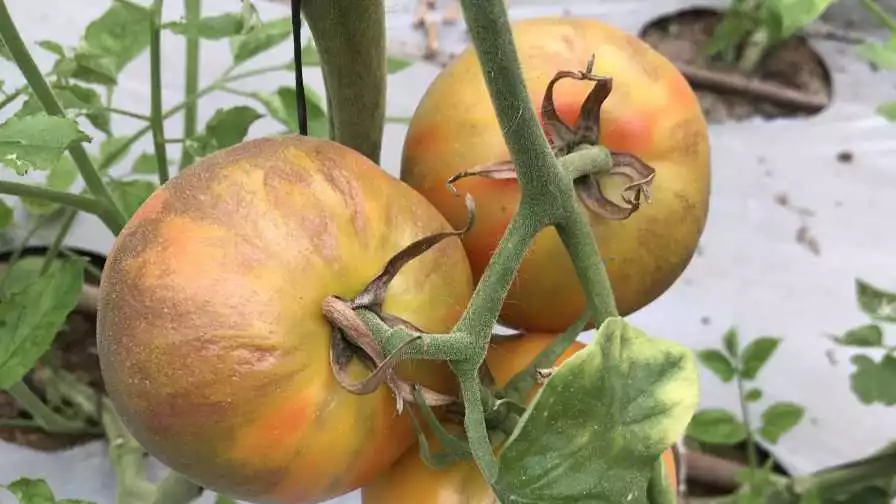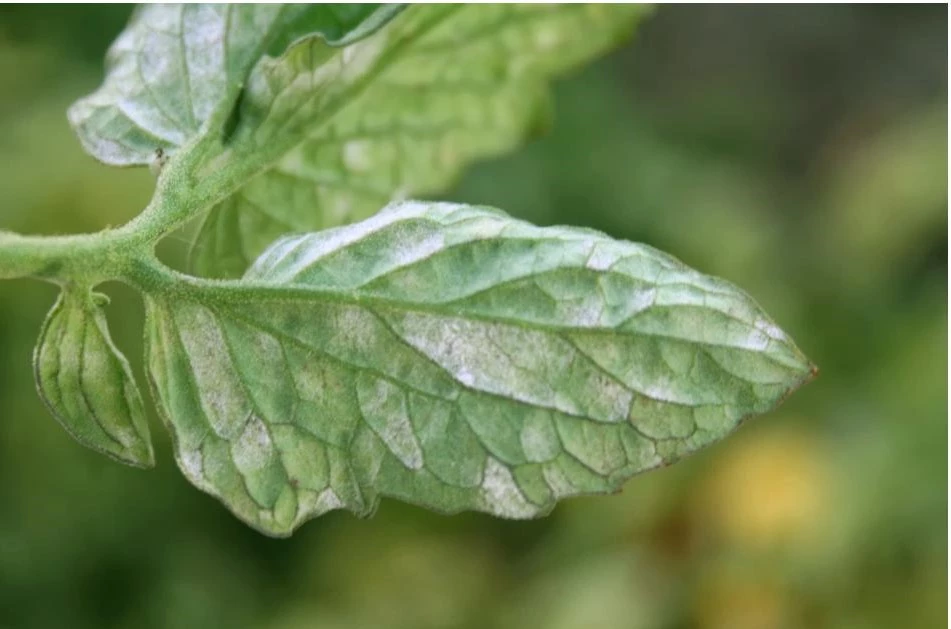Pseudomonas syringae What is Pseudomonas syringae? The bacteria Pseudomonas syringae is a common plant pathogen mostly found in stems and leaves [1]. It infects a wide range of plants—including fruit trees, greenhouse vegetables, ornamentals, and field crops. Annually, the bacteria cause billions of dollars of damage worldwide from lost fruits, damaged trees, unmarketable ornamentals, and […]
Rhizoctonia solani What is Rhizoctonia solani? The fungus Rhizoctonia solani is a soilborne pathogen that spreads in wet and warm conditions. It infects many economically vital plants—including greenhouse vegetables, ornamentals, and field crops [1, 2]. Crops affected by this pathogen include peppers, lettuce, potatoes, tomatoes, rice, soybeans, wheat, lilies and turf grass. In fact, it […]
Impatiens Necrotic Spot Virus An emerging threat to greenhouse vegetables Impatiens necrotic spot virus first emerged in floriculture and nursery crops [1] and is now affecting and causing considerable losses to these greenhouse-grown vegetable crops such as cucumber, tomato, pepper, and lettuce [2]. An economic analysis done on two lettuce growers in the Salinas Valley […]
Written by: Becky Anderson Published by: David Santos Ralstonia solanacearum What is Ralstonia solanacearum? The bacterial pathogen Ralstonia solanacearum is a Gram-negative, soil-borne bacterial pathogen that causes bacterial wilt and brown rot in potatoes. This bacterium belongs to a complex of four groups called phylotypes. These groups are known as the R. solanacearum species complex (RSSC). Each […]
Written by: Becky Anderson Published by: David Santos What is Fusarium oxysporum? Fusarium oxysporum is a fungus which can cause root rot, crown rot and, most commonly, wilting in a wide variety of crops such as basil, lettuce, cannabis and tomatoes (Figure 1). Wilting caused by F. oxysporum is known as Fusarium wilt and is a common […]
Written by: Becky Anderson Published by: David Santos What is Podosphaera xanthii? Podosphaera xanthii is a pathogenic fungus which causes “powdery mildew” on plants, especially cucurbits [1]. The naming of this fungus is not standardized, and you may also know it as Podosphaera fusca, Sphaerotheca fuliginea or Sphaerotheca fusca [1]. In addition to P. xanthii, powdery mildew […]
Written by: Becky Anderson Published by: David Santos What is Pectobacterium carotovorum? Pectobacterium carotovorum is one pathogen, of many, that causes soft rot in plants. It is a Gram-negative, rod-shaped, facultative anaerobe [1], (Figure 1). This bacteria is part of the order Enterobacterales [2] which includes other well-known bacteria such as Escherichia coli, Klebsiella pneumoniae and Salmonella, to […]
Written by: Becky Anderson Published by: David Santos What is Agrobacterium rhizogenes? Agrobacterium rhizogenes, also currently known as Rhizobium rhizogenes (1), is a Gram-negative, rod shaped, pathogenic bacteria (2) (Figure 1). A. rhizogenes lives in the rhizosphere, which is where the name derived (rhiza a root and gennao to make or to produce; hence, rhizogenes or root-producing). […]
What is ToBRFV? Tomato brown rugose fruit virus, commonly known as ToBRFV, is a virus belonging to the genus Tobamovirus. This virus has been around since 2014, when it was first discovered in Israel [1]. Although it is too early to estimate global crop production damage, data gathered from Florida, USA showed an estimated 30% – […]
Written by: Becky Anderson Published by: David Santos Powdery Mildew (Leveillula taurica) See our Resource page to see what we aim to cover in each post. What is Leveillula taurica? Leveillula taurica (also known as Oidiopsis taurica [1] in its asexual state) is a fungus which causes “powdery mildew” on plants among the Solanaceae, Alliaceae and Cucurbitaceae families […]


